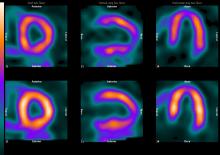The University of Alabama at Birmingham, in conjunction with researchers at the University of Wisconsin and Argonne National Laboratory in Illinois, have received a Department of Energy grant to solve a production roadblock for the radioactive isotopes 43Sc and 47Sc. These radioactive isotopes of the metallic element scandium (Sc) appear to be ideal for visualizing and then destroying solid tumors. A barrier, however, blocks their use — the inability to rapidly produce and purify the isotopes in useful amounts. 43Sc has a half-life of 3.9 hours, so every four hours more than half the radioactivity is lost. It must be used in a positron emission tomography (PET) scan the same day it is made.



